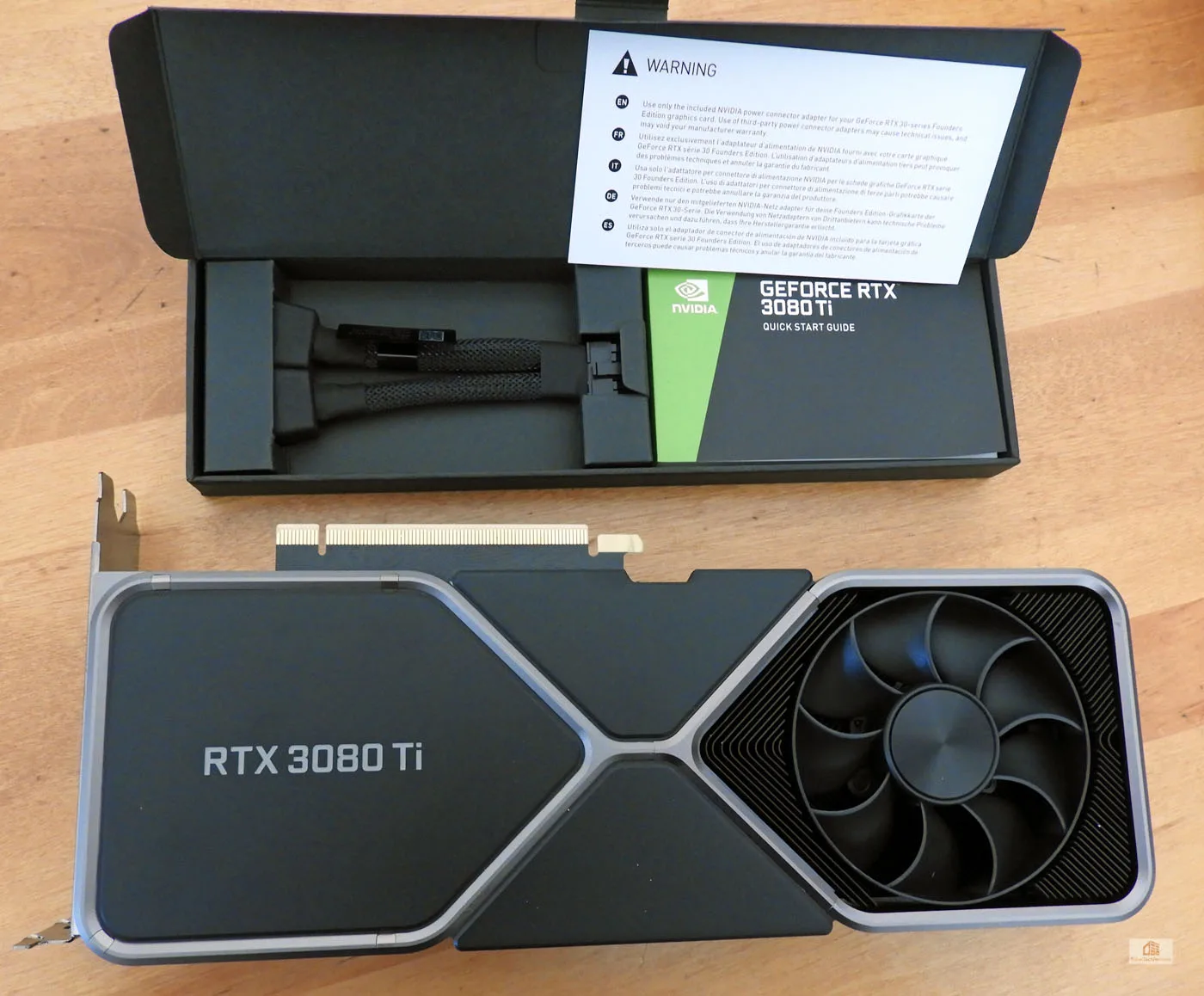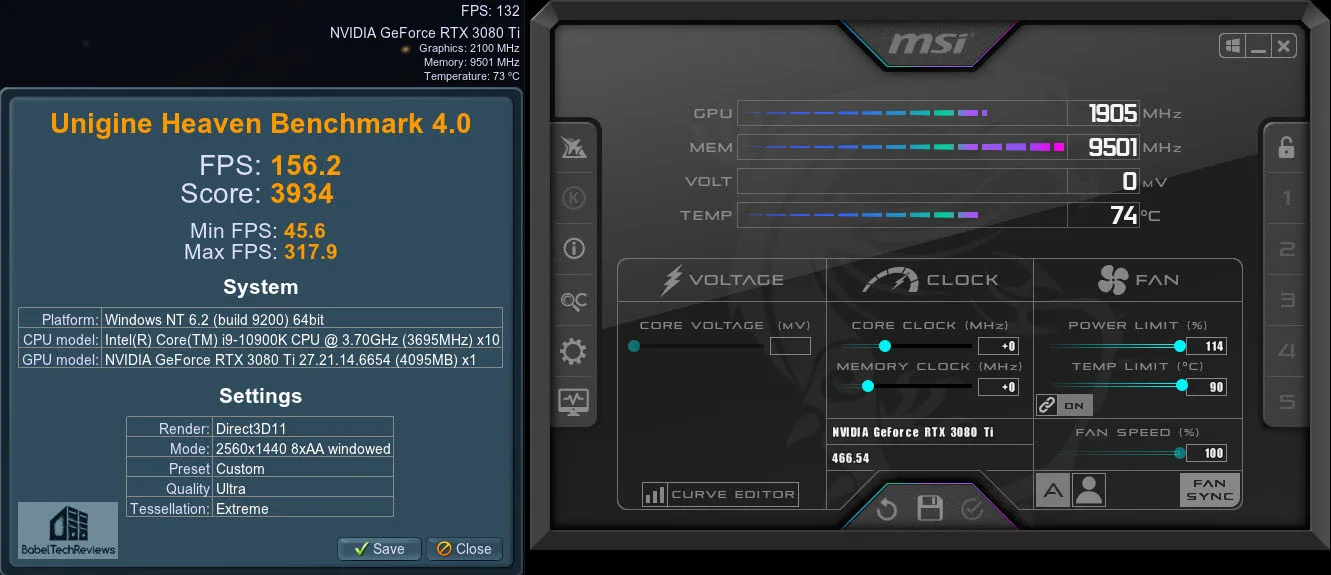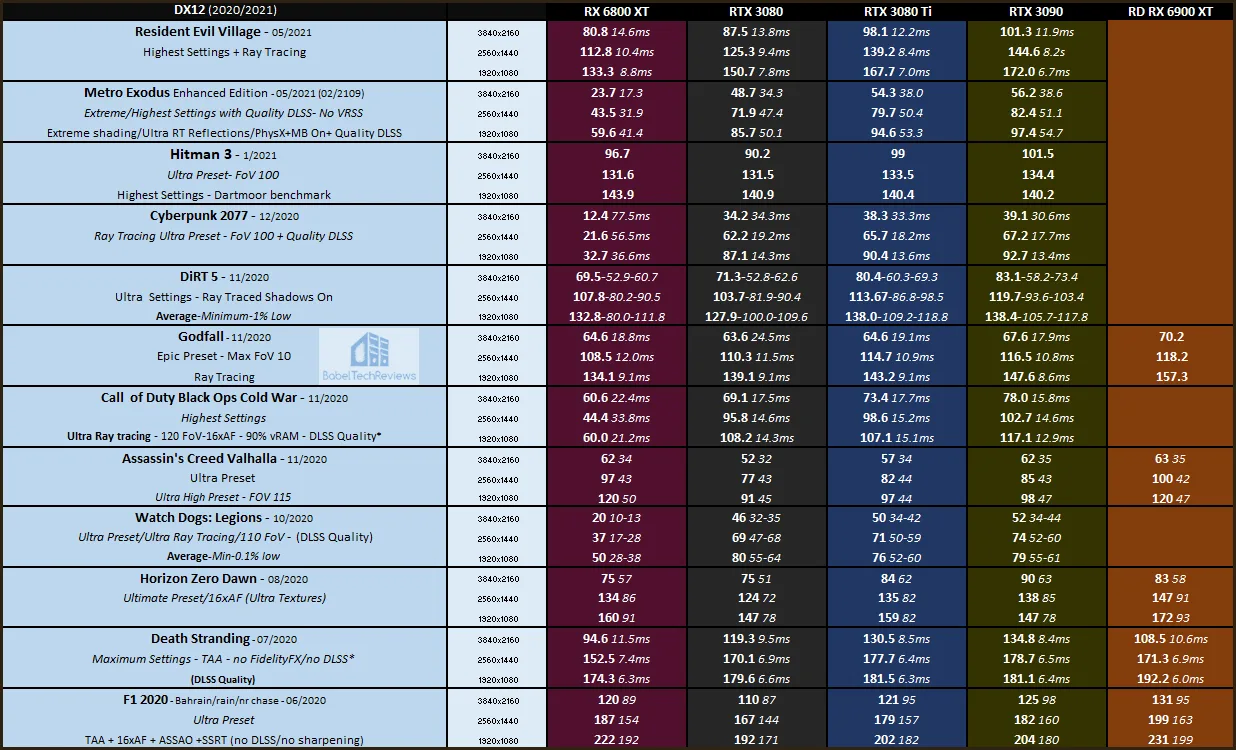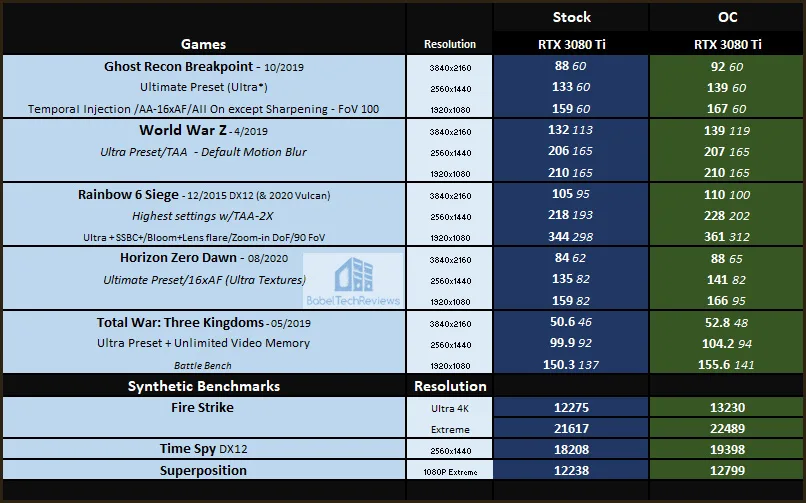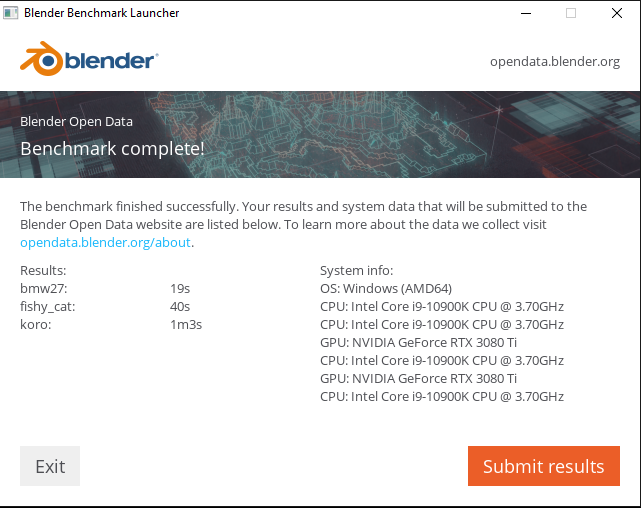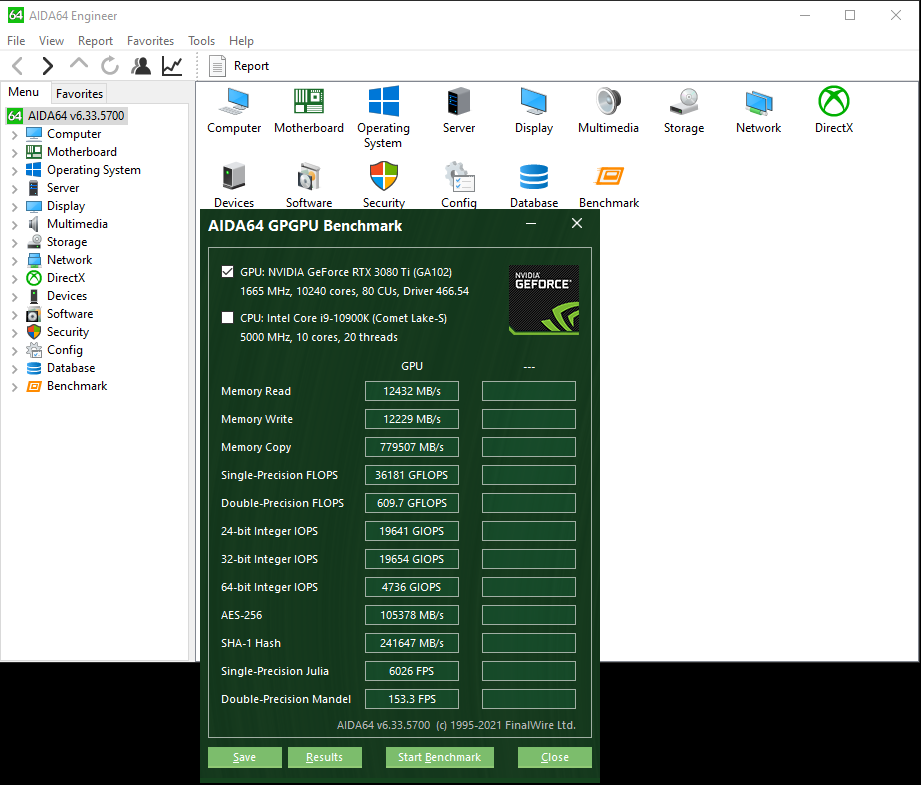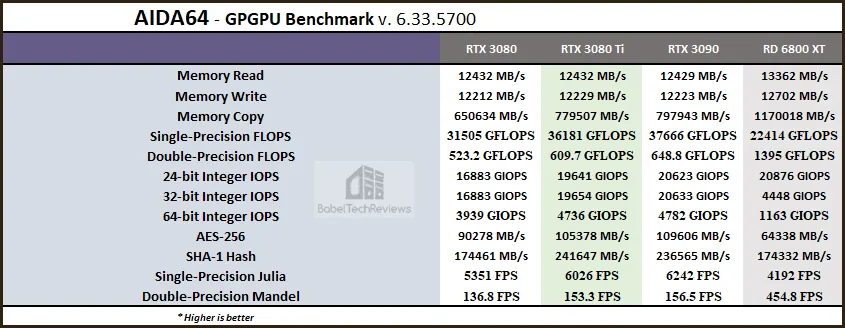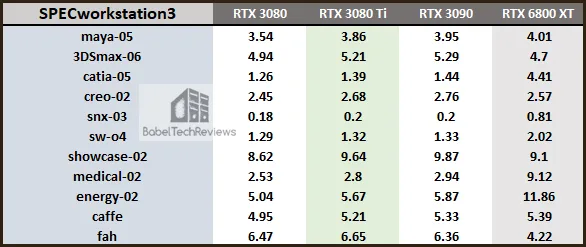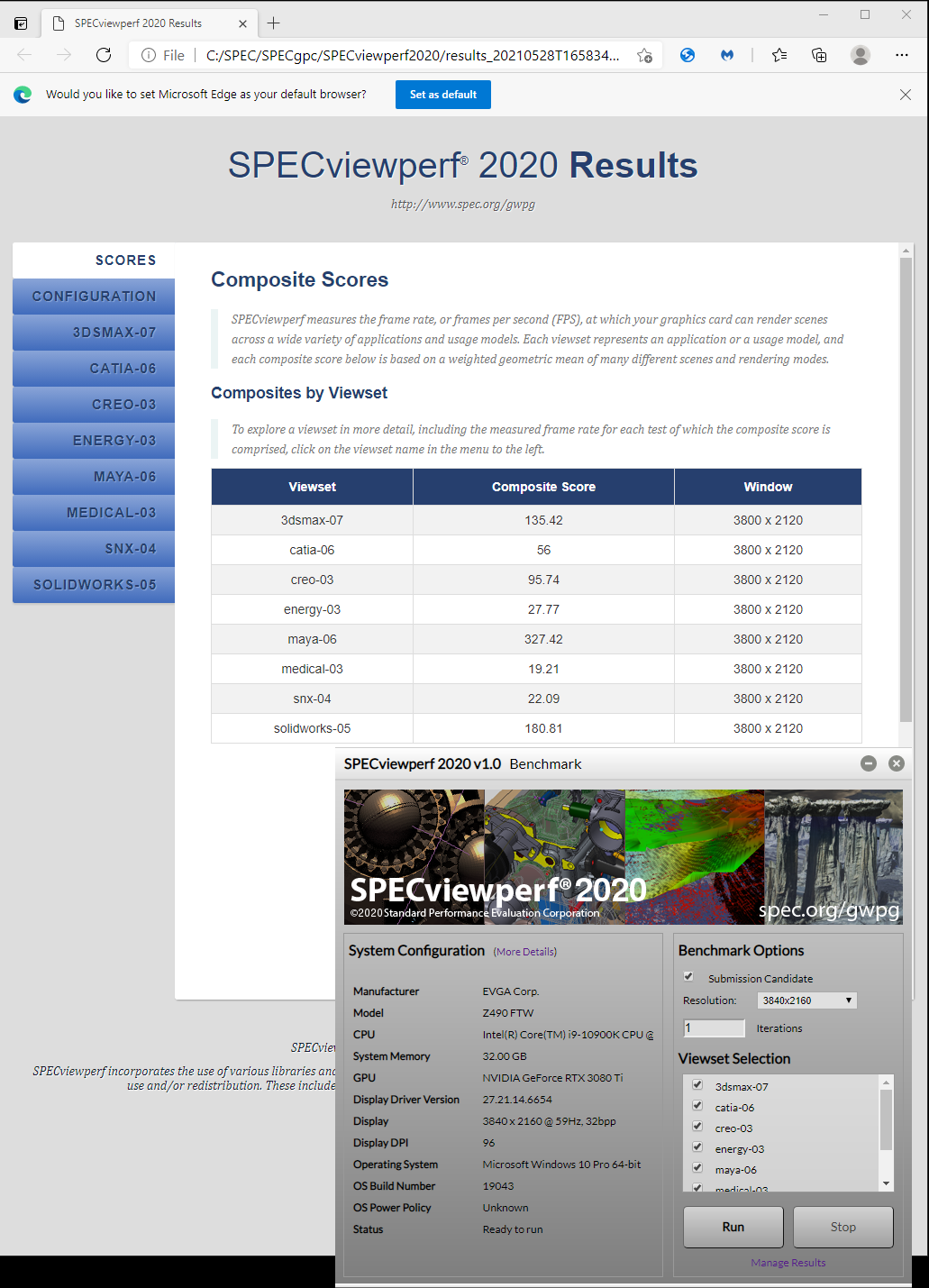The RTX 3080 Ti Arrives at $1199 – Performance Revealed – 25 Games, SPEC, Workstation, and GPGPU Benchmarked
BTR received the RTX 3080 Ti 12GB Founders Edition (FE) from NVIDIA and we have been testing its performance by benchmarking 25 games and also by overclocking it. NVIDIA claims that at $1199 it is almost as fast as the Ampere Flagship, the RTX 3090, which launched at $1,499 so we compare their performance using BTR’s 25 latest games including Resident Evil 8, Metro Exodus Enhanced Edition, and Days Gone with an emphasis on ray tracing and DLSS. In addition, although the RTX 3080 Ti is now NVIDIA’s flagship gaming GeForce card, we have added workstation, SPEC, and GPGPU benches.
The RTX 3090 is about 1.5x faster than the $1199 RTX 2080 Ti Turing flagship and much faster in ray traced games, so we are going to compare performance using five top cards – the 3080 Ti FE, the RTX 3090 FE, the RTX 3080 FE, as well as versus the reference RX 6800 XT and the Red Devil RTX 6900 XT. However, because of supply/demand issues, all suggested pricing is meaningless as only a very lucky few gamers will get them at or close to MSRP/SEP.
NVIDIA indicates that the RTX 3080 Ti has been in full production and stockpiled for over a month, so they’re already in the hands of retailers and have been for weeks so they can build supply. Even so it will still sell out probably within seconds because the demand is just that high.
Negativity and Hope
There has been a lot of pent up negativity about video cards for over 6 months because of their general unavailability with ridiculously high prices. Social media has blamed NVIDIA and AMD for these issues and few care to read reviews. There has been a perfect storm of twin pandemics hitting in 2020 – COVID-19 and Cryptomining. Both pandemics have increased demand as many people who were forced to stay home turned to gaming. In addition, Etherium GPU mining is currently still profitable which means that miners compete with gamers for supply. But we believe that this is about to change as what goes boom also will go bust.
We believe that the demand for video cards is going to take a steep drop soon. ETH GPU mining will die after (1) the difficulty spikes in July, (2) Summer’s cooling costs hit miners; (3) ASICS’ efficiency moves the big ETH miners away from GPU farms, and (4) gamers return to work en masse in the USA and Europe followed by the rest of the world as vaccinations bring an end to the COVID-19 pandemic. As governments again look to regulate and tax BitCoin profits, it is already showing signs of imploding. More video cards are beginning to show up on eBay at slightly lower prices. The end of the COVID-19 and Crypto pandemics are in view and a new ‘Roaring 20s’ for gamers may soon appear on the horizon.
Specifications
We have already covered Ampere’s features in depth and we have reviewed the RTX 3080, the 3080 Ti’s $699 slower brother that comes equipped with 10GB of vRAM. We have also reviewed NVIDIA’s flagship RTX 3090 which launched at $1499 and comes equipped with 24GB of vRAM. This review will consider whether the new RTX 3080 Ti FE at $1199 delivers a good value. The GA102 RTX 3080 Ti has 10240 CUDA cores which is more than double the CUDA cores of the RTX 2080 Ti. It delivers 34 TFLOPS of shader performance plus 67 RT-TFLOPS and 273 Tensor-TFLOPS for ray tracing and AI.
Since the RTX 2080 Ti launched in 2018, there are now more than 130 games and applications supporting NVIDIA RTX tech including ray tracing and Deep Learning Super Sampling (DLSS) and more AI features. Since all of the vendors and console platforms now support ray tracing technology, it is becoming a checkbox feature for AAA and even for indie games, so we will focus on these newer games. NVIDIA’s Reflex latency-reducing technology is also now supported in 12 of the top 15 competitive shooters and we will follow up this review with an upcoming latency review.
Games showcased during COMPUTEX that will be adding both ray tracing and DLSS include The Ascent, DOOM Eternal, DYING: 1983, Icarus, LEGO Builder’s Journey and The Persistence. New games using DLSS will include Red Dead Redemption 2 and Rainbow Six Siege.
We benchmark using Windows 10 64-bit Pro Edition at 1920×1080, 2560×1440, and at 3840×2160 using Intel’s Core i9-10900K at 5.1/5.0 GHz and 32GB of T-FORCE DARK Z 3600MHz DDR4 on a EVGA Z490 FTW motherboard. All games and benchmarks use the latest versions, and we use recent GeForce Game Ready drivers for games.
Let’s first unbox the RTX 3080 Ti Founders Edition before we look at our test configuration
The RTX 3080 Ti Founders Edition Unboxing
The Ampere generation RTX 3080 Ti Founders Edition is also a completely redesigned Founders Edition and here is the card, unboxed.
Inside the box and beneath the card are warnings, a quick start guide and warranty information, plus the 12-pin to PCIe 8-pin dongle that will be required to connect the RTX 3080 Ti to most PSUs.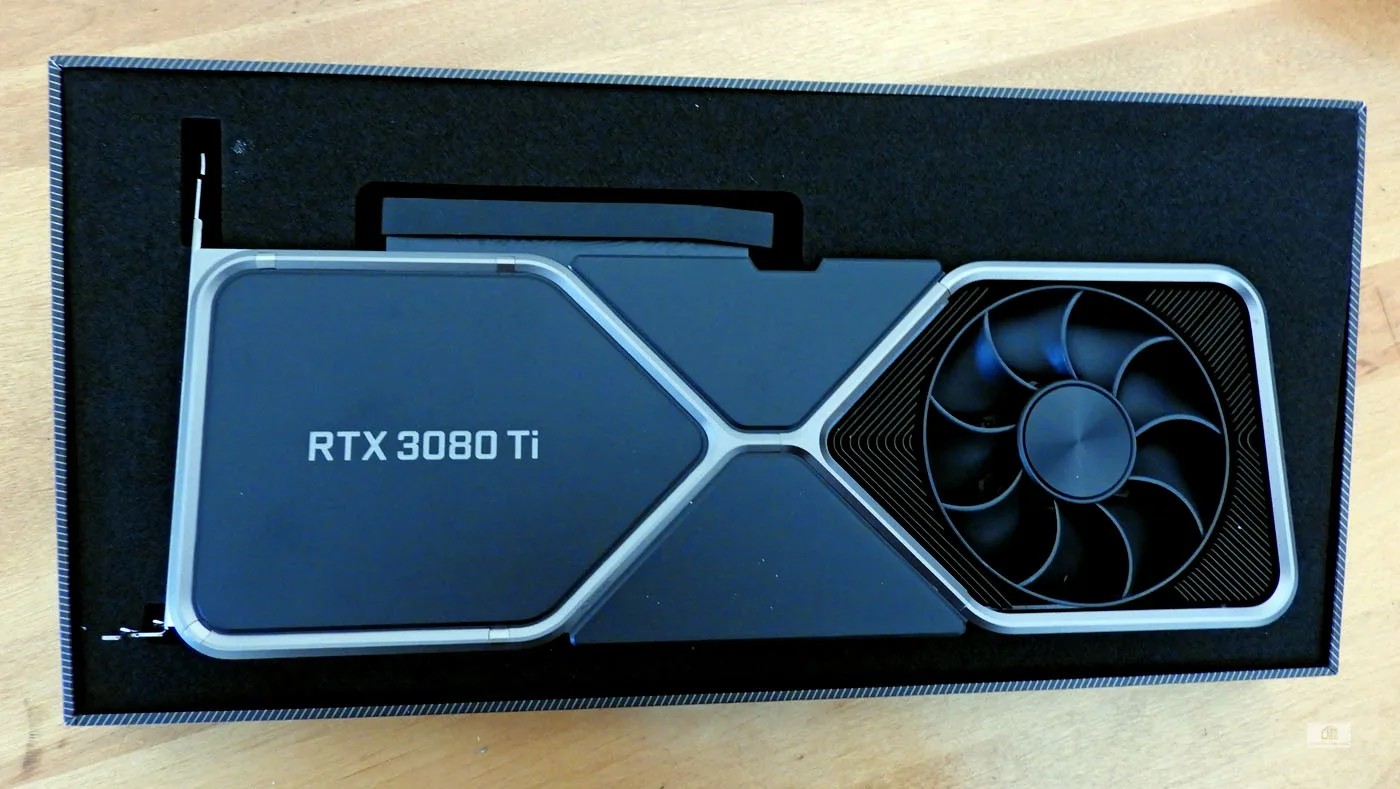 Just like the RTX 3080 and RTX 3090 Founders Editions, the RTX 3080 Ti comes in a “shoebox” style box where the card inside lays flat at a slight incline for display.
Just like the RTX 3080 and RTX 3090 Founders Editions, the RTX 3080 Ti comes in a “shoebox” style box where the card inside lays flat at a slight incline for display.
The system requirements, contents, and warranty information are printed on the bottom of each box. 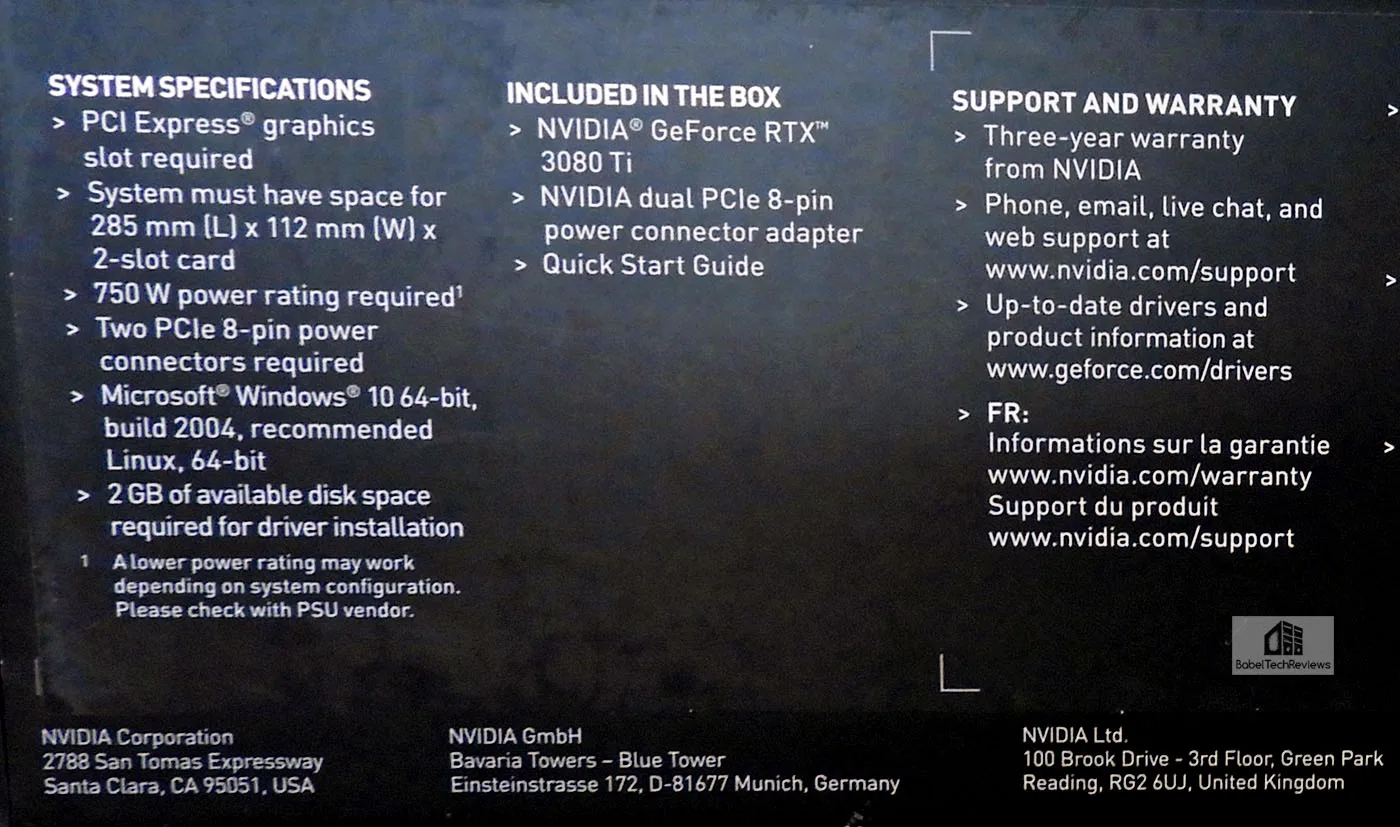 The RTX 3080 Ti requires a minimum 750W power supply unit, and the case must have space for a 285mm (L) x 112mm (W) two-slot card. It easily fits in our Phanteks Eclipse P400 ATX mid-tower as it is much smaller than the RTX 3090 and the same size as the RTX 3080.
The RTX 3080 Ti requires a minimum 750W power supply unit, and the case must have space for a 285mm (L) x 112mm (W) two-slot card. It easily fits in our Phanteks Eclipse P400 ATX mid-tower as it is much smaller than the RTX 3090 and the same size as the RTX 3080.
The RTX 3080 Ti Founders Edition is a moderately heavy 2-slot card with dual fans.
Turning the card over, we see the similar unique design of Ampere FEs. This card is designed to keep the GPU cool including by using a short PCB, and inside the card it is mostly all heatsink fins.

There is very large surface area for cooling so the heat is readily transferred to the fin stack and the dual fans exhaust the heat out of the back of the case and also from the top of the card into the case’s airflow.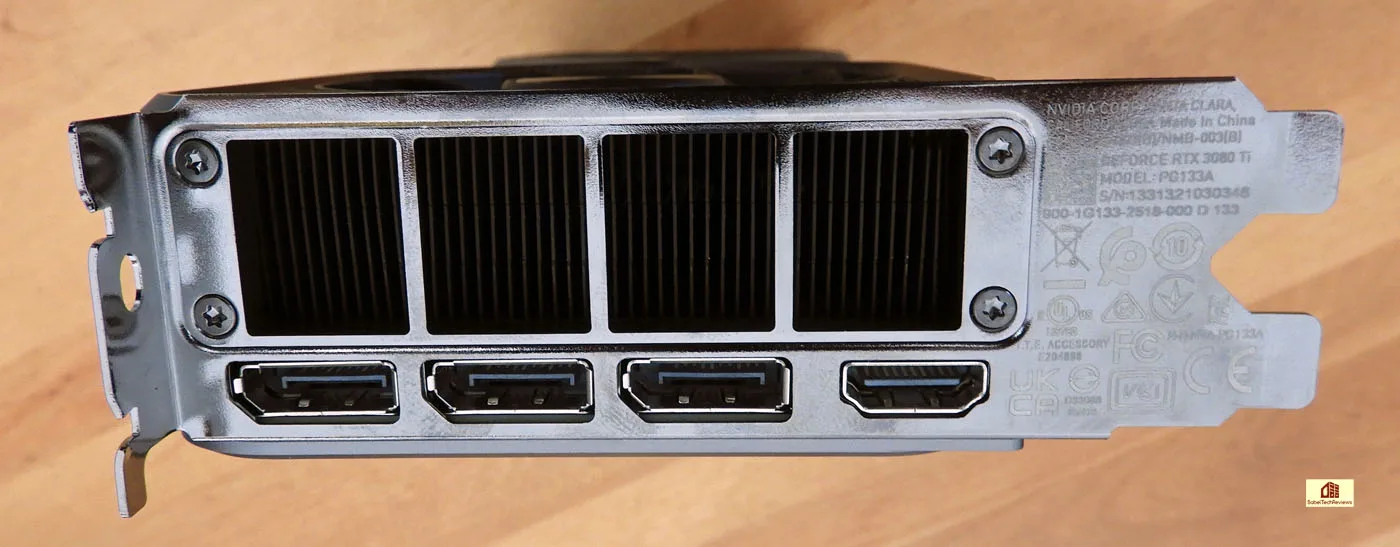
The IO panel has a very large air vent and four connectors. The connectors are similar to the Founders Edition of the RTX 2080 Ti and the RTX 3080, but the VirtualLink connector for VR is no longer used. Three DisplayPort 1.4 connectors are included, and the HDMI port has been upgraded from 2.0 to 2.1 allowing for 4K/120Hz over a single HDMI cable.
Before we look at overclocking, power and noise, let’s check out our test configuration.
Test Configuration
Test Configuration – Hardware
- Intel Core i9-10900K (HyperThreading/Turbo boost On; All cores overclocked to 5.1GHz/5.0Ghz. Comet Lake DX11 CPU graphics)
- EVGA Z490 FTW motherboard (Intel Z490 chipset, v1.3 BIOS, PCIe 3.0/3.1/3.2 specification, CrossFire/SLI 8x+8x), supplied by EVGA
- T-FORCE DARK Z 32GB DDR4 (2x16GB, dual channel at 3600MHz), supplied by Team Group
- RTX 3080 Ti Founders Edition 12GB, stock and overclocked, on loan from NVIDIA
- RTX 3090 Founders Edition 24GB, stock clocks, on loan from NVIDIA
- RTX 3080 Founders Edition 10GB, stock clocks, on loan from NVIDIA
- Radeon RX 6800 XT 16GB reference version, stock clocks on loan from AMD
- Red Devil RX 6900 XT 16GB, at Red Devil clocks, loaned by PowerColor and returned in April.
- 1TB Team Group MP33 NVMe2 PCIe SSD for C: drive
- 1.92TB San Disk enterprise class SATA III SSD (storage)
- 2TB Micron 1100 SATA III SSD (storage)
- 1TB Team Group GX2 SATA III SSD (storage)
- 500GB T-FORCE Vulcan SSD (storage), supplied by Team Group
- ANTEC HCG1000 Extreme, 1000W gold power supply unit
- BenQ EW3270U 32″ 4K HDR 60Hz FreeSync monitor
- Samsung G7 Odyssey (LC27G75TQSNXZA) 27? 2560×1440/240Hz/1ms/G-SYNC/HDR600 monitor
- DEEPCOOL Castle 360EX AIO 360mm liquid CPU cooler
- Phanteks Eclipse P400 ATX mid-tower (plus 1 Noctua 140mm fan) – All benchmarking and overclocking performed with the case closed
Test Configuration – Software
- GeForce 466.47 for (RTX 3080 Ti Press launch drivers) are used for all GeForce cards.
- Adrenalin 21.5.2 drivers used for the RX 6800 XT and 21.3.2 used for the RX 6900 XT.
- High Quality, prefer maximum performance, single display, set in the NVIDIA control panel.
- VSync is off in the control panel and disabled for each game
- AA enabled as noted in games; all in-game settings are specified with 16xAF always applied
- Highest quality sound (stereo) used in all games
- All games have been patched to their latest versions
- Gaming results show average frame rates in bold including minimum frame rates shown on the chart next to the averages in a smaller italics font where higher is better. Games benched with OCAT show average framerates but the minimums are expressed by frametimes (99th-percentile) in ms where lower numbers are better.
- Windows 10 64-bit Pro edition; latest updates 21H1 (Build1 9043.1023). DX11 titles are run under the DX11 render path. DX12 titles are generally run under DX12, and multiple games use the Vulkan API.
- Latest DirectX
- MSI’s Afterburner, 4.6.4 beta to overclock the RTX 3080 Ti
Games
Vulkan
- DOOM Eternal
- Red Dead Redemption 2
- Ghost Recon: Breakpoint
- World War Z
- Rainbow 6 Siege
DX12
- Resident Evil VIllage
- Metro Exodus – Enhanced Edition & regular edition
- Hitman 3
- Cyberpunk 2077
- DiRT 5
- Godfall
- Call of Duty Black Ops Cold War
- Assassins Creed Valhala
- Watch Dogs Legions
- Horizon Zero Dawn
- Death Stranding
- F1 2020
- Borderlands 3
- Civilization VI – Gathering Storm Expansion
- Battlefield V
- Shadow of the Tomb Raider
DX11
- Days Gone
- Crysis Remastered
- Destiny 2 Shadowkeep
- Total War: Three Kingdoms
Synthetic
- TimeSpy (DX12)
- 3DMark FireStrike – Ultra & Extreme
- Superposition
- Heaven 4.0 benchmark
- AIDA64 GPGPU benchmarks
- Blender 2.92 benchmark
- Sandra 2020/21 GPGPU Benchmarks
- SPECworkstation3
- SPECviewperf 2020
- Octane benchmark
NVIDIA Control Panel settings
Here are the NVIDIA Control Panel settings.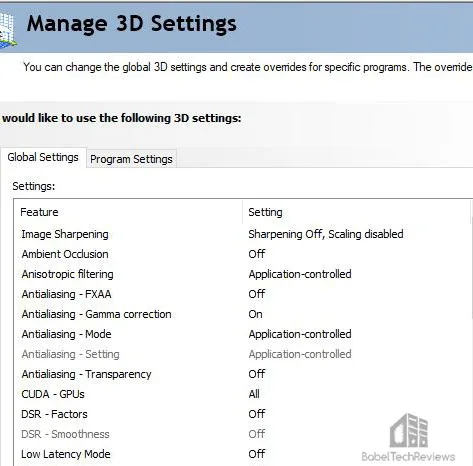
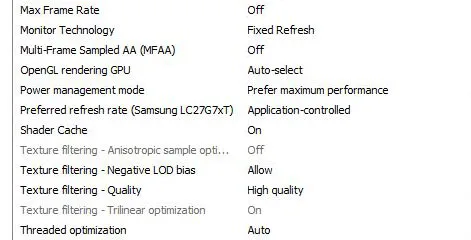
 AMD Adrenalin Control Center Settings
AMD Adrenalin Control Center Settings
All AMD settings are set so that all optimizations are off, Vsync is forced off, Texture filtering is set to High, and Tessellation uses application settings. Navi cards are quite capable of high Tessellation unlike earlier generations of Radeons.

Anisotropic Filtering is disabled by default but we always use 16X for all game benchmarks.
Let’s check out overclocking, temperatures and noise next.
Overclocking, Temperatures & Noise
All of our performance and overclocked testing are performed in a closed Phanteks Eclipse P400 ATX mid-tower case. Inside, the RTX 3080 Ti is a quiet card even when overclocked and we never needed to increase its fan speeds manually or change the stock fan profile. We overclocked using Afterburner without adding any extra voltage.
We used Heaven 4.0 running in a window at completely maxed-out settings at a windowed 2560×1440 to load the GPU to 98% so we could observe the running characteristics of the RTX 3080 Ti and also to be able to instantly compare our changed clock settings with their results. At completely stock settings with the GPU under full load, the card ran cool and stayed below 70C with clocks that averaged around 1830MHz.
Simply raising the Power and Temperatures to their maximums resulted in the clocks running above 1900MHz with a small rise in temperatures using the stock fan profile. 
After testing multiple combinations, our RTX 3080 Ti’s final stable overclock to achieve the highest overall performance added +160MHz offset to the core and +700 MHz to the memory. to achieve a core clock around 2000MHz with a memory clock of 10200MHz. The RTX 3080 Ti FE is power-limited, and to achieve a higher overclock will require more voltage. Our review sample is only a fair overclocker. If you want a higher overclock, pick a partner overclocked AIB.
To see the performance increase from overclocking, we tested 5 games. The results are given after the main performance charts in the next section.
First, let’s check out performance on the next page.
Performance Summary Charts & Graphs
Gaming Performance Summary Charts
Here are the summary charts of 25 games and 3 synthetic tests. The highest settings were always chosen and the settings are listed on the chart. The benches were run at 1920×1080, 2560×1440 and at 3840×2160. Five cards were compared and they are listed in order starting from left to right with the reference RX 6800 XT, the RTX 3080 FE, the RTX 3080 Ti FE, the RTX 3090, and the Red Devil RX 6900 XT (which was benchmarked in April).
Most results, except for synthetic scores, show average framerates, and higher is better. Minimum framerates are next to the averages in italics and in a slightly smaller font. Games benched with OCAT show average framerates, but the minimums are expressed by frametimes (99th-percentile) in ms where lower are better.
Although there is some variability, the RTX 3080 Ti FE is only around 2-4% slower than the RTX 3090 FE and it is faster than either the RX 6800 XT or the RX 3080. It trades blows with the Red Devil RX 6900 XT in rasterized games, but is much faster in most ray traced games and a lot faster when DLSS is used.
Next we look at overclocked performance.
Overclocked benchmarks
These benchmarks are run with the RTX 3080 Ti overclocked +160MHz on the core and +700MHz on the memory versus at stock clocks. The RTX 3080 Ti stock results are presented first and the overclocked results are shown in the second column.
There is a small performance increase from overclocking the RTX 3080 Ti Founders Edition. NVIDIA has locked down Ampere cards overclocking in an attempt to maximize performance for all Founders Edition gamers. We would also suggest that the RTX 3080 Ti FE is rather voltage constrained and if you want a higher overclock, pick a factory-overclocked partner version instead of a Founders Edition.
Let’s look at non-gaming applications next to see if the RTX 3080 Ti is a good upgrade from the other video cards we test starting with Blender.
Blender 2.92 Benchmark
Blender is a very popular open source 3D content creation suite. It supports every aspect of 3D development with a complete range of tools for professional 3D creation.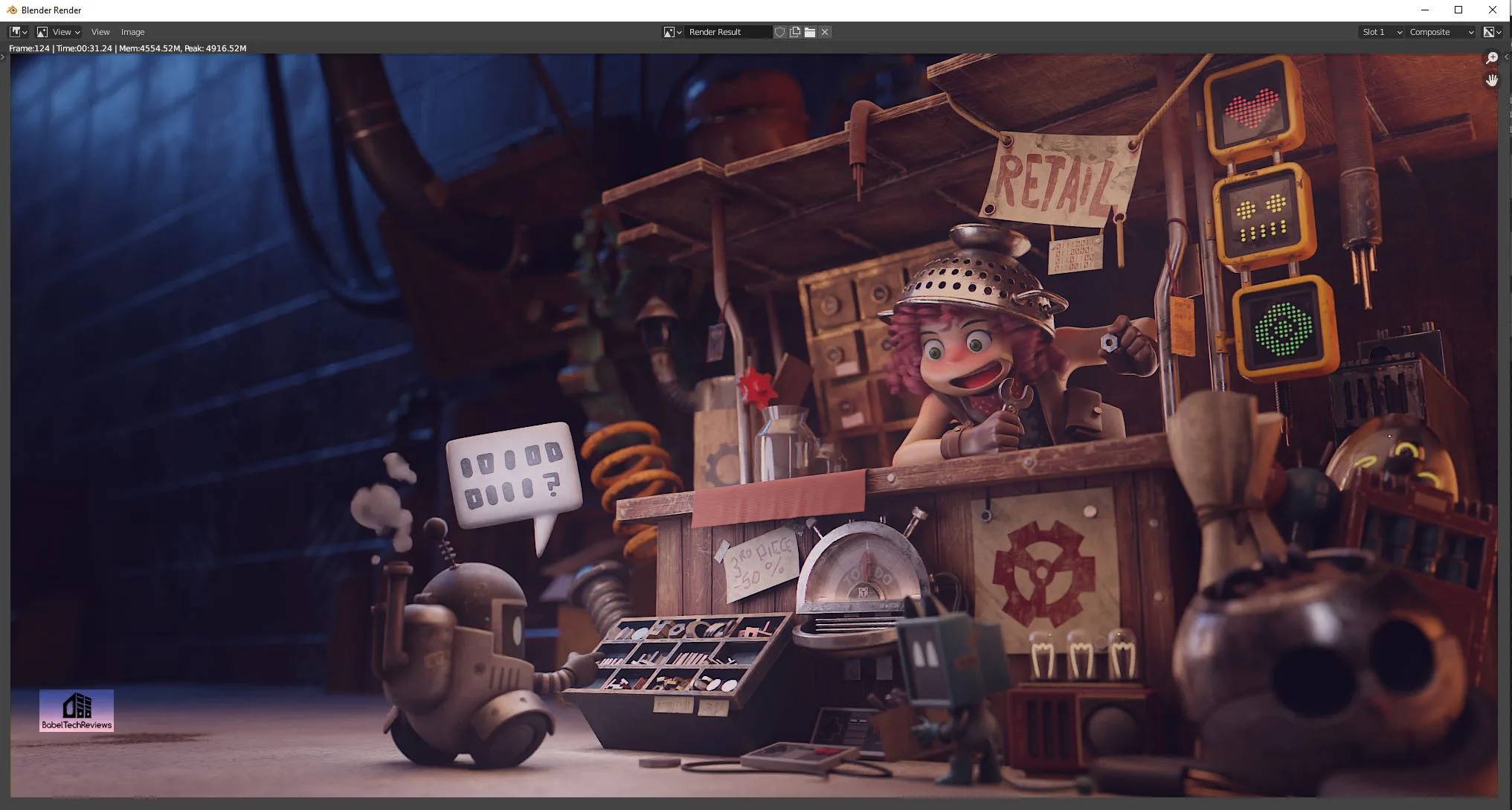
We benchmarked three Blender 2.92 benchmarks which measure GPU performance by timing how long it takes to render production files. We tested seven of our comparison cards with both CUDA and Optix running on the GPU instead of using the CPU. We did not benchmark the RX 6800 XT using OpenCL.
For the following chart, lower is better as the benchmark renders a scene multiple times and gives the results in minutes and seconds.
Blender’s benchmark performance is similar between the RTX 3080 Ti compared with the RTX 3090.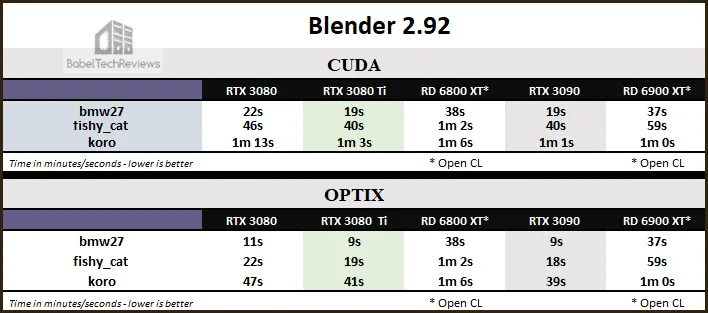
Next we look at the OctaneBench.
Octane Bench
OctaneBench allows you to benchmark your GPU using OctaneRender. The hardware and software requirements to run OctaneBench are the same as for OctaneRender Standalone.
We run OctaneBench 2020.1.5 for Windows and here are the RTX 3080 Ti’s complete results and overall score of 644.48.
Here is the summary chart comparing our three GeForce cards. Radeons cannot run Octane benchmark.
The RTX 3080 Ti is a decent card when used for rendering and closer to the RTX 3090 in performance than the RTX 3080.
Next, we move on to AIDA64 GPGPU benchmarks.
AIDA64 v6.33
AIDA64 is an important industry tool for benchmarkers. Its GPGPU benchmarks measure performance and give scores to compare against other popular video cards.
AIDA64’s benchmark code methods are written in Assembly language, and they are well-optimized for every popular AMD, Intel, NVIDIA and VIA processor by utilizing the appropriate instruction set extensions. We use the Engineer’s full version of AIDA64 courtesy of FinalWire. AIDA64 is free to to try and use for 30 days.
Here is the chart summary of the AIDA64 GPGPU benchmarks with four of our competing cards side-by-side.
The RTX 3080 Ti is a fast GPGPU card and it compares favorably with the RTX 3090. So let’s look at Sandra 2020 next.
SiSoft Sandra 2020/21
To see where the CPU, GPU, and motherboard performance results differ, there is no better tool than SiSoft’s Sandra 2020. SiSoftware SANDRA (the System ANalyser, Diagnostic and Reporting Assistant) is a excellent information & diagnostic utility in a complete package. It is able to provide all the information about your hardware, software, and other devices for diagnosis and for benchmarking. Sandra is derived from a Greek name that implies “defender” or “helper”.
There are several versions of Sandra, including a free version of Sandra Lite that anyone can download and use. Sandra 2021 R2 is the latest version, and we are using the full engineer suite courtesy of SiSoft. Sandra 2020/21 features continuous multiple monthly incremental improvements over earlier versions of Sandra. It will benchmark and analyze all of the important PC subsystems and even rank your PC while giving recommendations for improvement.
We ran Sandra’s intensive GPGPU benchmarks and charted the results summarizing them. There was a bug in one Processing benchmark that affected the Red Devil RX 6800 XT with OpenCL that is being addressed by SiSoft.
In Sandra GPGPU benchmarks, the RTX 3080 Ti is similar in performance to the RTX 3090. Interestingly, the RTX 3080 Ti Hashing bandwidth is much lower than the RTX 3080 and even the RX 6800 XT as NVIDIA has limited its cryptocurrency mining ability. However, since the architectures are different, each card exhibits different characteristics with different strengths and weaknesses.
SPECworkstation3 Benchmarks
All the SPECworkstation3 benchmarks are based on professional applications, most of which are in the CAD/CAM or media and entertainment fields. All of these benchmarks are free except for vendors of computer-related products and/or services.
The most comprehensive workstation benchmark is SPECworkstation3. It’s a free-standing benchmark which does not require ancillary software. It measures GPU, CPU, storage and all other major aspects of workstation performance based on actual applications and representative workloads. We only tested the GPU-related workstation performance as checked in the image above.
Here are our raw SPECworkstation 3.0.4.summary and raw scores for the RTX 3080 Ti.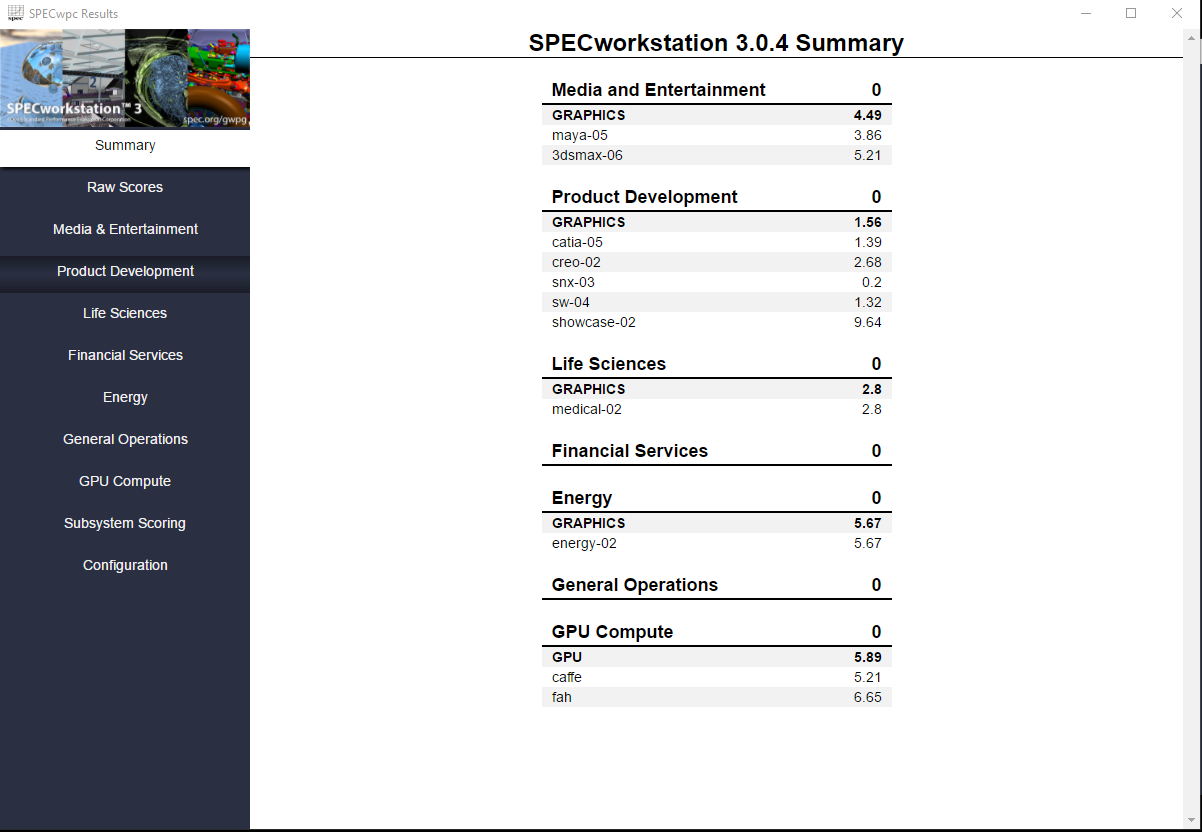
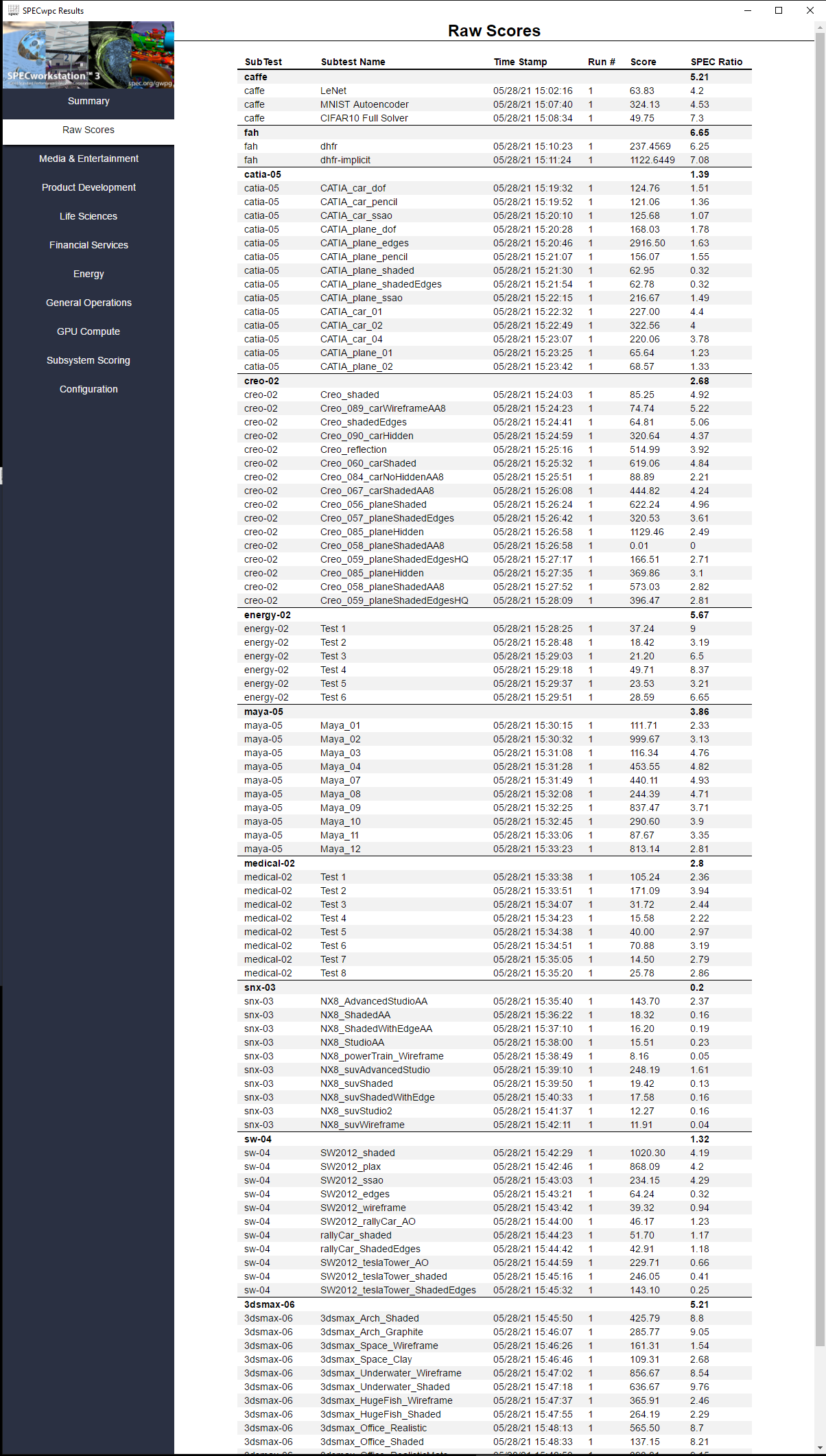

Here are the SPECworkstation3 results summarized in a chart along with four competing cards. Higher is better.
Using SPEC benchmarks, the RTX 3080 Ti is similar in performance to the RTX 3090. However, since the architectures are different, the cards each exhibit different characteristics with different strengths and weaknesses.
SPECviewperf 2020 GPU Benches
The SPEC Graphics Performance Characterization Group (SPECgpc) has released a 2020 version of its SPECviewperf benchmark that features updated viewsets, new models, support for both 2K and 4K display resolutions, and improved set-up and results management.
We benchmarked at 4K and here are the summary and the raw results for the RTX 3080 Ti.
Here are SPECviewperf 2020 GPU benchmarks summarized in a chart together with three other cards.
Again the RTX 3080 Ti is faster than the RTX 3080 and very close to RTX 3090 performance.
After seeing these benches, some creative users may wish to upgrade their existing systems with a new RTX 30X0 series card based on the performance increases and the associated increases in productivity that they require. The question to buy an RTX 3080 Ti should be based on the workflow and requirements of each user as well as their budget. Time is money depending on how these apps are used. However, the target demographic for the RTX 3080 Ti is primarily gaming for gamers, especially at 1440P and at 4K.
Let’s head to our conclusion.
Final Thoughts
The $1199 RTX 3080 Ti FE performed admirably performance-wise compared to the RTX 3090 which is still the fastest gaming card in the world that released at $1499. Therefore at less than 5% slower, the RTX 3080 Ti is a solid upgrade over the RTX 2080 Ti that also launched at $1199 even though we were originally hesitant to recommend the upgrade to a RTX 2080 Ti nearly three years ago based on its value to performance.
If a gaming enthusiast wants a very fast card that almost matches the RTX 3090 FE, it is an excellent card for 4K or 1440P gaming.
We are impressed that the Founders Edition of the RTX 3080 Ti nearly catches the RTX 3090 in a much smaller form. It offers outstanding performance at 1440P and at 4K. The Founders Edition of the RTX 3080 Ti is well-built, solid, and good-looking, and it stays cool and quiet even when overclocked. At 1.5X faster, the RTX 3080 Ti Founders Edition offers a solid upgrade for RTX 2080 Ti owners. However, it is not a compelling upgrade from a $699 RTX 3080 FE which has a much higher value to price ratio – if they can be found at MSRP.
Pros
- The RTX 3080 Ti at $1199 is the near-equal of the RTX 3090 which launched at $1499 and it is also a 1.5X jump in performance over the RTX 2080 Ti.
- The RTX 3080 Ti is perfect for 1440P or for 4K gaming; and it’s also very useful for intensive creative, SPEC, or GPGPU apps
- Ray tracing is a game changer in every way and the RTX 3080 Ti is much faster than the RX 6800 XT or RX 6900 XT when DLSS 2.0 or ray tracing features are enabled
- Reflex and Broadcast are important features for competitive gamers and broadcasters
- Ampere improves over Turing with AI/deep learning and ray tracing to improve visuals while also increasing performance with DLSS 2.0 and Ultra Performance DLSS
- The RTX 3080 Ti Founders Edition design cooling is quiet and efficient; the GPU in a well-ventilated case stays cool even when overclocked and it remains quiet using the stock fan profile
- The industrial design is eye-catching and it is solidly built
Cons
- High Price
- Lack of availability
The Verdict
If you are a gamer who plays at maxed-out 1440P or even at 4K, you may want to upgrade to a RTX 3080 Ti. The Founders Edition offers good performance value as an upgrade from a RTX 2080 Ti with the additional benefit of being able to handle ray tracing much better, and it can even meet the demands of 4K gaming with high settings. It is much faster in ray traced games than any Radeon.
The RTX 3080 Ti Founders Edition is available starting tomorrow for $1199 from NVIDIA’s online store, and USA customers can purchase these cards also directly from Best Buy both online and in person. Only a relatively few lucky gamers will be able to buy one at SEP, but we believe the supply issue will ease and pricing will return to normal by the Autumn and this review will be even more useful in making a high end card selection then.
Stay tuned, there is a lot more on the way from BTR. Next week, we will test the RTX 3070 Ti in VR using the brand new Vive Pro 2. Stay tuned to BTR!
Happy Gaming!

